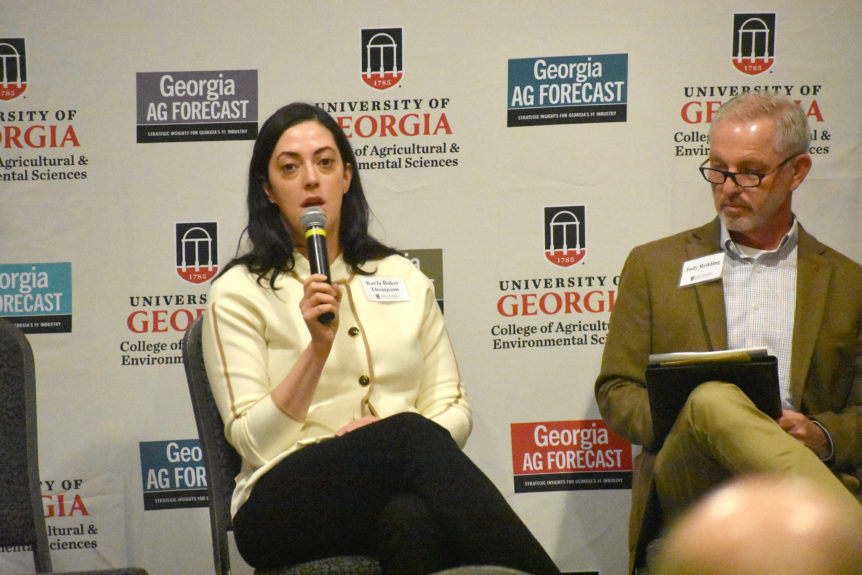By Clint Thompson
The controversial H-2A system was a point of emphasis during the University of Georgia Ag Forecast event last week.

The only reliable source of labor for specialty crop producers is also extremely expensive, almost prohibitively so for some growers. It also has stringent regulations that can be burdensome for farmers trying to stay compliant.
Producers like Karla Baker Thompson had their chance to discuss H-2A at Ag Forecast, specifically the rising costs with the Adverse Effect Wage Rate.
Reform Needed
Thompson, with JET Farms, in Camilla, Georgia, emphasized the program’s regulatory challenges in discussing the impact it has had on specialty crop producers in the Southeast. Reform is the only solution for a problem spiraling out of control.
“We all know, too, that there are a lot of administrative burdens, and there’s a lot of expense. Lately, there’s been a lot of unpredictability as to what that expense is actually going to be,” she said. “I think we need some reform for H-2A. There’s a lot of people in our communities that have an ag background and ag skills, but they are not necessarily available to work for legal status reasons.
“I think for me personally, the Farm Workforce Modernization Act had some good pieces in it, because it had some reform to H-2A. It was going to help make it more flexible and a little more updated. It had some ways to try to figure out how we can get people that we know that are dedicated to ag to be able to stay in this country and work on farms. I think if we can revisit the good parts of legislation like that, I think that would go a long way.”
She and her family’s business utilize the H-2A program to utilize nearly 300 workers every year for their fall and spring sweet corn crop.










